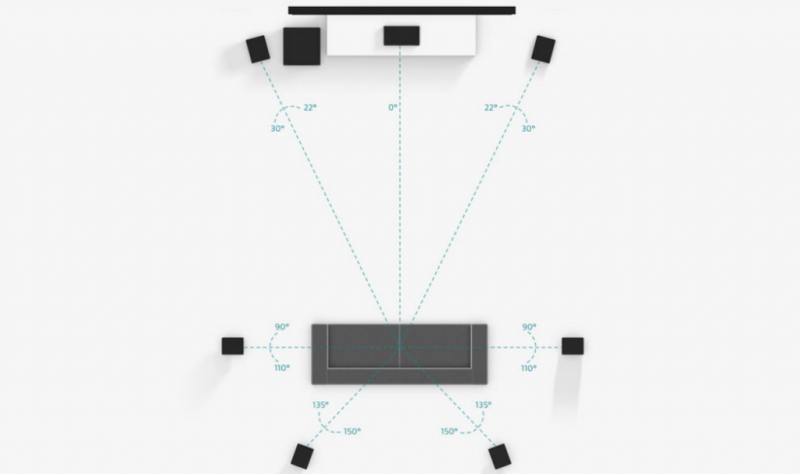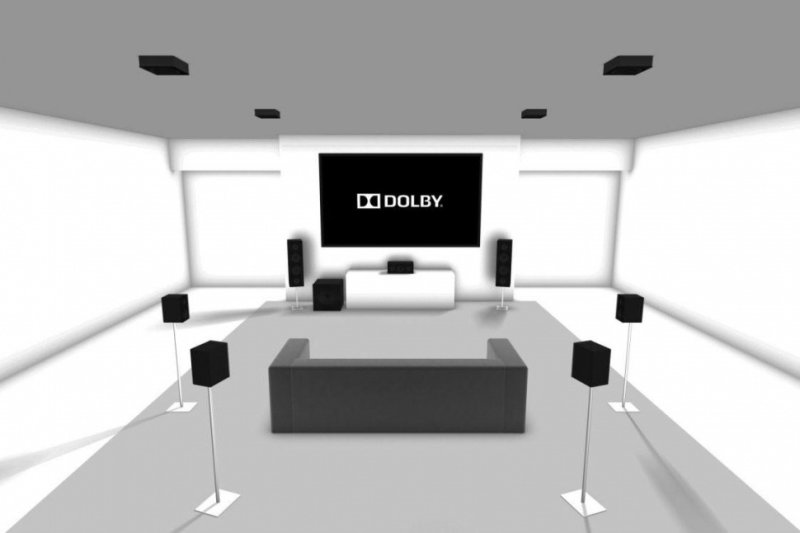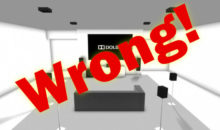Speakers Distance vs Angle: Which Makes the Most Difference in Your Home Theater?
Compromise is part of life. It would be great if wanting a thing was enough. If that were the case, I’d have a washboard stomach, could climb 5.13s, and would still look 25. But it isn’t. Home theater is the same way. We wish we could all have dedicated rooms, but we can’t. Often, even if we do have a dedicated space, it isn’t as optimal as we’d like. We need to compromise somewhere. Maybe we can’t get the screen we want, or place our seats where we’d like. Often, it is all about speaker placement. There are so many speakers these days (thanks Dolby) that getting them all in the right location can be problematic. They are supposed to be a certain distance from you, from each other, and also at specific angles. Where should you compromise? If you can’t place your home theater speakers where you want, is distance or angle more important? Let’s discuss.
Not All Home Theater Speaker Distances are the Same
When you are setting up your home theater speakers, you worry about angles, yes, but also two different distance considerations. The first distance is how far the speakers are to your seated position. The second is how far the speakers are from each other. If you look at the diagrams put out by Dolby (and others), they show the speakers very far from you and each other.

Rarely will you find someone that has this much space with which to work. Heck, if you look at the size of the screen in the diagram above, it is far too small. This diagram is not meant to be to scale. With that in mind, the first thing we need to look at is the distance from speaker to speaker.
The front speakers are separated from each other and the center speaker enough so that the center lines up with the center of the couch. The left and right speakers are on the outside of the arms of the couch. The side surround speakers are to the sides of the couch and a little behind. The surround back speakers are in line with the front speakers (generally) and behind the listener. The side surrounds are a good amount of distance from the surround back speakers on each side.
None of the speakers are closer to the listener than what appears to be four or five feet. Some are much farther away. And don’t get me started on that subwoofer placement.
Which Distance is Most Important
When you are setting up your home theater speakers, getting the angles right is very important, but so is the distance. Not from you and the speaker as much as it is the speakers from each other. If two speakers are essentially overlapping, the soundstage they are trying to create will get garbled. This often happens with Atmos speakers.

The above picture shows the Atmos speaker well above the side surround and surround back speakers. In a real room, they often end up very close to each other. That proximity can confuse your ear as to where the sound is coming from. This can eliminate any benefit you thought you’d be getting by having more speakers. Better to have fewer with more separation between them than more speakers that are basically on top of each other.
Distance Between You and Speaker
When you run through your AV receiver’s room correction program, it will set your speaker trim levels and distance. The distance really is about how much delay to add to the signal sent to the speaker so it arrives at the seat at the same time as the other speakers. The trim level ensures that the volume is the same for all the speakers so that speakers that are situated at different distances sound the same.
The problem arises when a speaker is VERY close to the seat. This happens often with side surround speakers. They end up just behind or to the sides of the couch. While the volume will be adjusted by the receiver, the speaker is still very close to any listener sitting on that side. That isn’t a very pleasant listening experience.
Speakers Distance or Angle – What is Most Important in Home Theater?
Obviously, if your speakers aren’t at the correct angles from your seat, the surround sound won’t be convincing. That is very important. But the speakers also must have enough separation between them. So, in order:
- Angle
- Distance from each other
- Distance from you
The first thing you want to work out is where your speakers can be placed based on the suggested angles. Then, from your seat, look at how much distance there is from speaker to speaker. You do this at your seat because the angles matter. A ceiling speaker may be five feet from a surround speaker but basically be in line with each other when viewed from your seat. Speakers should have a minimum of three feet between them and we often recommend at least five. If you can’t get five feet between your speakers, you need to remove one. This may mean you can have either an Atmos ceiling speaker or a surround back speaker.
Yes, we are aware that your AV receiver can feed seven floor-level speakers and four overhead speakers. Just because it can do a thing, doesn’t mean it will sound good in your room. If the speakers are physically too close to each other, they just aren’t going to sound good. Go with 5.2.4 if your surround back and Atmos speakers are too close. Trust us, it will sound better. Just make sure you label your Atmos speakers correctly.
Lastly, try to keep your speakers as far away from you as reasonable (but not too far). If you don’t have any space to the sides or back of your seat, you may not have many options. Your receiver will level match those speakers, but having them a little further back will create a more diffuse sound. If you have to choose between the speakers’ distance from your home theater seats or the angle, the angle is more important. Put them in the right location first, and let the receiver worry about the volume.






